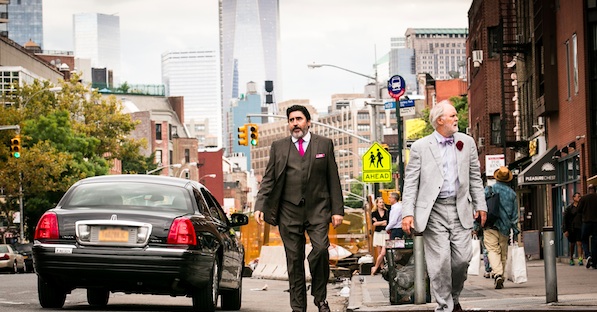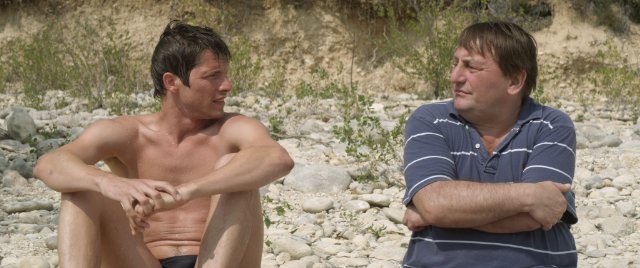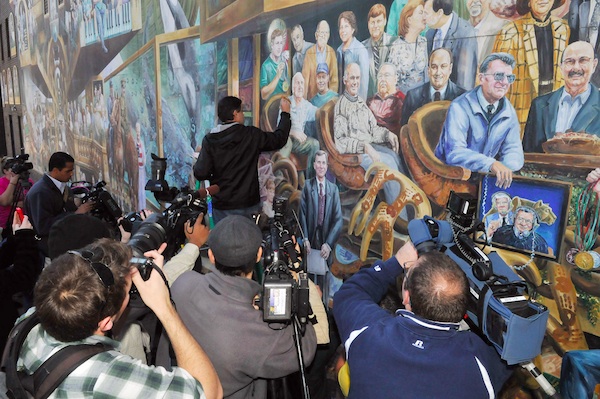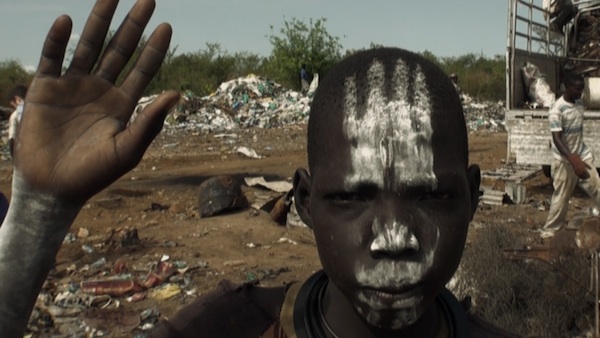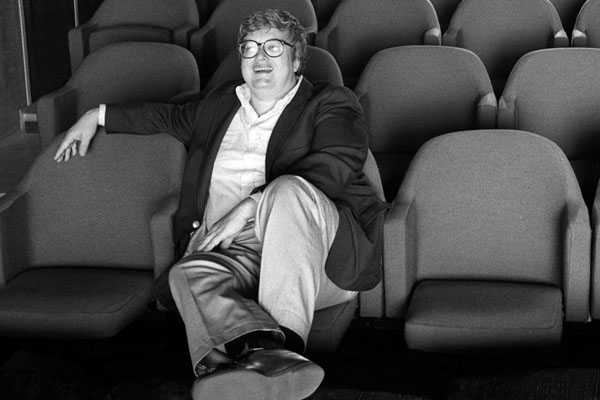I wouldn’t have believed it unless I had heard it myself, but a complaint that emerged from Sundance 2014 was—oddly enough—that there wasn’t enough of a wait in lines. Hours of huddling in cold alleyways and standing in overheated tents for tickets were, this time, replaced by an e-ticket system for the waitlist that allowed patrons to simply log-in for a number. Lost: those foxhole friendships that often formed, occasional fights that sometimes broke out and the background buzz on the best and worst of the screenings. Gained: efficiency and an accompanying trend toward iPhone checking and Facebook sharing over engaging in actual live, person-to-person conversation.
True as it may be that if you don’t talk to strangers, you’ll never make any friends, the flip-side of the talking-to-strangers-business was the topic-at-hand in the first film I viewed at Sundance, and the best. Stranger by the Lake, a film opening this week that’s been much talked about since its debut at Cannes, is an achievement so towering it felt out of place in this struggling-filmmaker setting. Programmed in the Spotlight, which allows Sundance to feature the best films that have premiered at festivals elsewhere, Alain Guiraudie’s noir dance of eros and thanatos in a lakeside “cruising” location hits its notes bravely and precisely as it follows the story of a kind-natured Franck (Pierre Delandonchamps) willingly seduced by danger in the form of fellow-cruiser (Christoph Paou). The images—a choppy body of water, dry rocky “beach,” Edenic woods, foreboding sky, naked male bodies in full repose and lots and lots of unvarnished copulation—are breathtaking; the story itself has drama to match. (But the less you know about the plot, the better. See also Steven Erickson’s interview with the director.)
Connections dark and light to strangers via celluloid was, as always, a theme for the festival, and one underlined by Roger Ebert’s (and more on that later) ethos as seen in memoir-to-film Life Itself, in which the beloved, deceased Ebert argues for cinema as a means of expanding our world and building empathy for others. The festival, while always a winter-camp for film professionals and a convention of buyers-and-sellers, was, more than ever, world-and-heart expanding. The agendas of its political documentaries were, naturally, vividly political in films I chose to see, dipping into Arab Spring (Greg Barker’s We Are the Giant), multinational landscape assault through mineral extraction (Mark Grieco’s Marmato, Hubert Sauper’s We Come as Friends), civil rights (both LGBTQ and Japanese American in Jennifer Kroot’s extremely entertaining To Be Takei), small-town delusion (Amir Bar-Lev’s take on the Penn State football-coaching/child sexual abuse story with Happy Valley) and large-scale U.S. government corruption (Joe Berlinger’s Whitey).
In many of these films, it was the filmmaking team’s unwillingness to compromise the truth of a story for dramatic purposes that was especially impressive. It seems audiences are tired of the relentlessly divisive pro-and-con of infinitely expanding TV and online media channels and expect that stories that make it into theaters should bring a more nuanced experience, a kind of poetry. (And each of the above-mentioned movies did qualify as poetic in at least one key way.) Where previous decades’ docs would leave little room for audience reflection and decision-making, this year’s crop brought ample amounts of fictional storytelling techniques, which included high expectations for audience self-education. (It’s easy enough to get more story via Google search before and after viewing.) Docs no longer have to be the last word; they can, like fiction films, offer a “feeling” that urges viewers on to the next stage of discovery.
In dramatic features, “discovery” is always sought after at Sundance, but sometimes breakthroughs come from the least expected places. The “discoveries” in two poignant American rom-coms of the festival—Ira Sachs’s Love Is Strange and Lynn Shelton’s Laggies—came via the unexpected brilliance of performances of already-lauded, high-profile actors. In the case of Shelton’s story, Keira Knightley unfastens the constricting period-piece wardrobe to brilliantly unravel as a lost young adult reverting to teen abandon. Sachs’s Love story—which turns on family and community love as much as two-person bonding—builds on authentic, lyrically low-key performances by name brands John Lithgow, Andrew Molina and Marisa Tomei.
So many of my own favorite Sundance moments in the many years I’ve attended the festival as a journalist, fan or Sundance fellow have involved Roger Ebert, asking the absolute perfect question at an 8 a.m. screening to an absolutely thrilled first-time filmmaker. Ebert was, truly, the populist he appears to be in Steve James’s Roger Ebert memoir-film Life Itself, a documentary whose real art lies in exposing Roger Ebert’s least charming qualities before lionizing him for his most. Intercut with present-day pain of enduring truly awful hospital procedures and speaking only through typing is the storyline of a born journalist and only child finding early success in the Chicago Sun-Times newsroom, having an early downfall through drinking and stepping into late, life-rescuing love followed by a third act as a social-media visionary.
It was a fitting epilogue to the Sundance chapter of the late critic’s career that it was the love of Ebert’s life, Chaz who, though visibly shaken post-screening, offered the earnest, well-timed riposte that lit up the room. Turning to Gene Siskel’s widow, who in the film had described her lanky, philosophically trained husband in understandably glowing terms, trial lawyer Chaz felt she had to right one wrong. “As an Ebert speaking to a Siskel,” she said, holding court, “I have to say that Gene was not more elegant than Roger.” (Followed of course, by an assurance on their enduring Siskel-Ebert friendship.) Much as Sundance or any room full of critics would have shed tears over Roger’s story whether told in standard one-hour format or created with Steve James’s (Hoop Dreams) artistry, what truly sets this film apart is James’s clear-eyed view of life, digging up the dirt of the Siskel-Ebert skirmishes and early boys’ club bar days while faithfully returning to the heroic images of Ebert in painful rehab. Those final days were incredible ones, as Ebert did not give into physical decline but expanded his own writing while building a whole new online empire of diverse voices (including Keyframe’s own Kevin Lee) who, one imagines, will be sustaining film life for decades to come.

